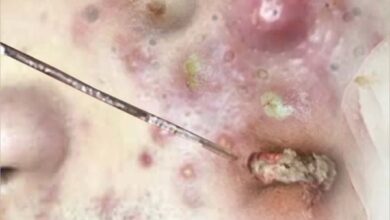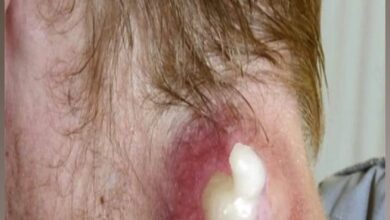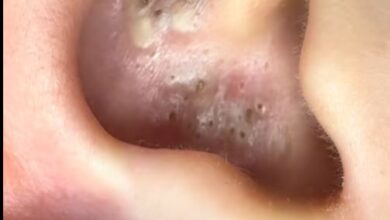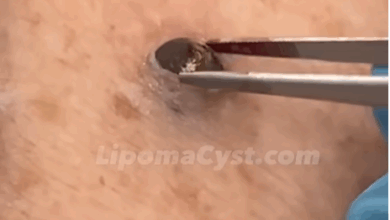Best Blackhead Extraction: Safe and Effective Methods
@bl4ckhead.extr4cti0n #BlackheadExtraction #BlackheadRemoval #Blackheads #PimplePopper #AcneTreatment #SkinCareRoutine #ClearSkin #AcneSolutions #SkinCareAddict #BlackheadExtractor #PoreCleaning #DeepCleansing #ExtractionTools #SkinExtraction #FacialExtraction #SkincareTools #PoreUnclogging #SkinCareTips #SkinCareLover #FaceCare #HealthySkin #GlowingSkin #CleanSkin #SkinHealth #FaceCleaning #OddlySatisfying #SatisfyingVideo #SatisfyingSkincare #RelaxingSkincare #SkinCareASMR #BlackheadSatisfying #DrPimplePopper #BlackheadVideos #SkincareTikTok #BlackheadChallenge #ViralSkincare #AcneRemoval ♬ sonido original – SONIDOS LARGOS
Blackheads are a common skin concern that many people face, especially in areas like the nose, chin, and forehead. They are a type of acne formed when hair follicles become clogged with oil, dead skin cells, and debris. When exposed to air, the contents oxidize and turn dark, giving blackheads their characteristic appearance.
While blackheads are not harmful, they can be annoying and affect the look and feel of your skin. Thankfully, there are safe and effective ways to extract blackheads — both at home and professionally. Here’s a complete guide to the best blackhead extraction methods.
1. Professional Extraction (Dermatologist or Esthetician)
Best for: Deep or persistent blackheads
Seeing a licensed dermatologist or esthetician is one of the safest and most effective options. Professionals use sterile tools and techniques to gently extract blackheads without damaging the skin.
Benefits:
- Reduces risk of scarring or infection
- Effective for stubborn or severe cases
- Often paired with treatments like facials or chemical peels
Tip: Avoid “pop-up” spas. Choose certified professionals with experience in acne care.
2. Blackhead Removal Tools (Comedone Extractors)
Best for: Occasional at-home use
These stainless steel tools are designed with small loops to press around the blackhead and remove it cleanly.
How to use:
- Wash your face and hands
- Steam your face for 5–10 minutes to open pores
- Disinfect the tool
- Gently press down on the blackhead
- Clean the area and apply a toner or a soothing serum
Caution: Never force a blackhead out. If it doesn’t come easily, stop and try another method.
3. Pore Strips
Best for: Quick removal on the nose and T-zone
Pore strips work by sticking to the debris in your pores and pulling it out when removed.
Pros:
- Easy to use
- Instant results
- Affordable and widely available
Cons:
- Only surface-level cleaning
- May irritate sensitive skin
Pro Tip: Use once a week after a hot shower when your pores are more open.
4. Chemical Exfoliants (AHAs & BHAs)
Best for: Preventing and clearing mild blackheads over time
Chemical exfoliants like salicylic acid (BHA) and glycolic acid (AHA) penetrate deep into the pores, dissolving oil and dead skin cells.
Benefits:
- Clears existing blackheads and prevents new ones
- Gentle exfoliation
- Improves overall skin texture
Usage: Start 2–3 times a week, then adjust as your skin builds tolerance.
5. Clay Masks
Best for: Oily and acne-prone skin types
Clay masks (like bentonite or kaolin) draw out impurities and absorb excess oil from the skin.
How to use:
- Apply an even layer
- Let dry for 10–15 minutes
- Rinse thoroughly and follow up with a moisturizer
Use 1–2 times per week to keep pores clear and reduce blackheads.
Tips for Preventing Blackheads
- Wash your face twice daily with a gentle cleanser
- Use non-comedogenic skincare and makeup products
- Don’t sleep with makeup on
- Exfoliate regularly (but not excessively)
- Keep your pillowcases and phone screen clean
Final Thoughts
Blackhead extraction can be satisfying and effective when done properly. While at-home methods like chemical exfoliants and clay masks are great for ongoing maintenance, deep or stubborn blackheads are best left to the pros. Whichever method you choose, remember to be gentle with your skin and consistent with your skincare routine.
If blackheads become painful, widespread, or lead to other forms of acne, it’s always best to consult a dermatologist.
Would you like a product recommendation section added too?





